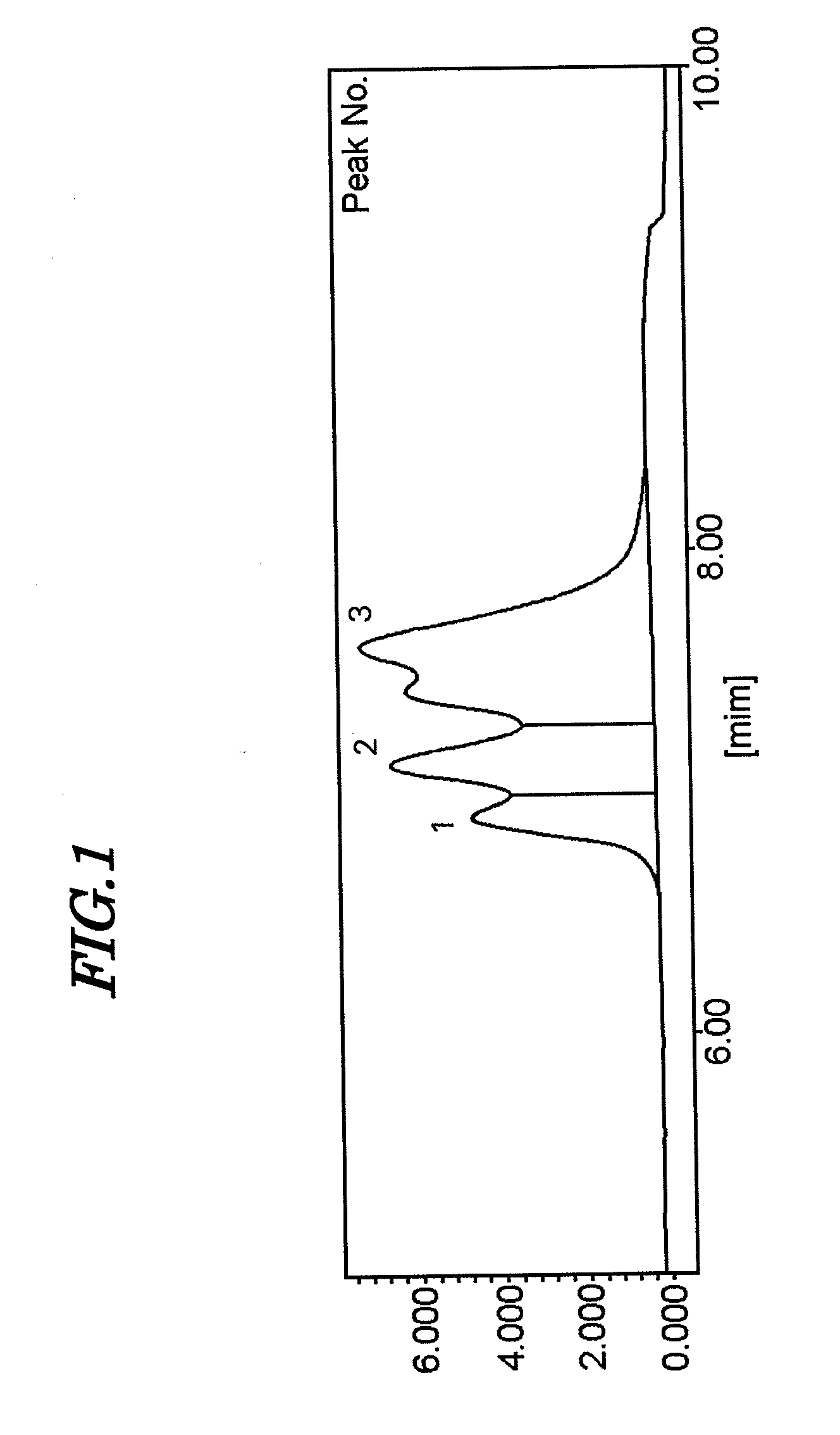Conjugated diene polymer, method for producing conjugated diene polymer, and conjugated diene polymer composition
a technology of conjugated diene polymer and diene polymer, which is applied in the direction of transportation and packaging, tyre parts, special tyres, etc., can solve the problems that the polymer compositions containing the conventional conjugated diene polymers above as rubber components are not fully satisfactory in terms of processability, and achieve good fuel economy and excellent processability.
- Summary
- Abstract
- Description
- Claims
- Application Information
AI Technical Summary
Benefits of technology
Problems solved by technology
Method used
Image
Examples
example 1
[0153]A 20 L capacity stainless polymerization reactor was washed, dried, flushed with dry nitrogen, and then charged with 10.2 kg of hexane (specific gravity 0.68 g / cm3), 461 g of 1,3-butadiene, 259 g of styrene, 6.1 mL of tetrahydrofuran, and 3.3 mL of ethylene glycol diethyl ether. Subsequently, 13.7 mmol of n-butyllithium was poured in as an n-hexane solution, the temperature of the interior of the polymerization reactor was adjusted to 65° C., 1,3-butadiene and styrene were supplied to the polymerization reactor, and polymerization was carried out for 3 hours, thus giving a polymer solution. The amount of 1,3-butadiene supplied during the 3 hours of polymerization was 691 g, and the amount of styrene supplied was 389 g.
[0154]The polymer solution thus obtained was stirred at a stirring speed of 130 rpm, a solution of 2.4 mmol of 3-(diethylamino)propyltrimethoxysilane dissolved in 10 mL of hexane was added to the polymer solution in 1 sec, and the polymer solution was stirred for...
example 2
[0158]The procedure of Example 1 was repeated except that the amount of n-butyllithium added was changed from 13.7 mmol to 15.5 mmol, instead of the solution of 2.4 mmol of 3-(diethylamino)propyltrimethoxysilane dissolved in 10 mL of hexane a solution of 2.7 mmol of 3-(diethylamino)propyltrimethoxysilane dissolved in 10 mL of hexane was used, and instead of the solution of 9.6 mmol of 3-(diethylamino)propyltrimethoxysilane dissolved in 10 mL of hexane, a solution of 10.7 mmol of 3-(diethylamino)propyltrimethoxysilane dissolved in 10 mL of hexane was used. The results of measurement of the physical properties of the polymer and the physical properties of a composition employing the polymer are given in Table 1.
[0159]Furthermore, the result of measurement by gel permeation chromatography of the polymer obtained in Example 2 is shown in FIG. 2.
PUM
| Property | Measurement | Unit |
|---|---|---|
| Temperature | aaaaa | aaaaa |
| Fraction | aaaaa | aaaaa |
| Fraction | aaaaa | aaaaa |
Abstract
Description
Claims
Application Information
 Login to View More
Login to View More - R&D
- Intellectual Property
- Life Sciences
- Materials
- Tech Scout
- Unparalleled Data Quality
- Higher Quality Content
- 60% Fewer Hallucinations
Browse by: Latest US Patents, China's latest patents, Technical Efficacy Thesaurus, Application Domain, Technology Topic, Popular Technical Reports.
© 2025 PatSnap. All rights reserved.Legal|Privacy policy|Modern Slavery Act Transparency Statement|Sitemap|About US| Contact US: help@patsnap.com



